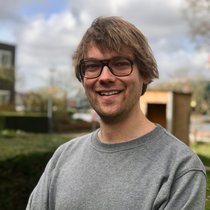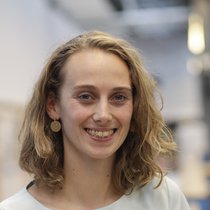There is a strong need to switch from a linear – make, waste, dispose – model, to a fully circular model for the city of Amsterdam. Amsterdam has committed to becoming fully circular by the year 2050. Circularity means to rethink and redesign the flow of resources such as building materials, water, food and energy that drive urban activities.
To illustrate, in Amsterdam, a million people use water to shower, flush toilets and use their washing machine every single day. By flushing down about 33L of water – that’s per person per day –cellulose-rich toilet paper also goes down the drain. This adds up to 175.000.000kg of toilet paper, which can be sieved by wastewater treatment plants every year.
What if we could re-use valuable resources like the aforementioned? This is, among others, investigated by COMPRO – one of our research projects on up-cycling organic waste within the program of Circularity in Urban Regions.
2 major waste-streams are upcycled in the COMPRO project
The COMPRO project builds on results and insights found by WASCOM – in which two major organic waste-streams are up-cycled to produce high-value building material for the city. These waste-streams are cellulose-fibres from retrieved toilet paper and a ‘biological glue’ called Kaumera produced by bacteria in the Nereda® wastewater treatment process.
Together these can be used to yield a fully bio-based and circular composite material called Re-plex. A material that can be of valuable use for the construction sector.
For this 3 year project, BAM Infraconsult, NPSP, ChainCraft, TU Delft join forces with our Research Fellows Peter Mooij and Mariet Sauerwein.

COMPRO: composite building material from wastewater resources
MSc MADE Living Lab: Students help investigate best applications for Re-plex
As part of their Living Lab course, MSc MADE students identified a number of applications for Re-plex. The students invited experts from different domains for co-creative sessions - coming from for example the areas of building construction, concrete pouring, municipal green services, furniture design.
No less than 41 applications were identified. To illustrate, Re-plex could be used in the construction sector to support structures in green roofs and walls or to create fire resistant panels. In green space, the material could be used to create plant pots for young unrooted plants or to make structures for climbing plants. Also, in public space, temporary paving can be developed with this bio-composite material. Curious what else the students found out in this Living Lab? Download their booklet.
Converting waste into valuable products
The concept of ‘waste’ is non-existent in nature. The products discharged by one organism serve as food for other organisms. A leaf falling from a tree will be consumed by bacteria and fungi, which release CO2 while degrading the leaf, and this CO2 can be taken from the atmosphere by the tree next spring to produce new leaves. This never-ending cycling of nutrients and materials allows ecosystems to run continuously.
Contrary to nature, urban areas discharge large flows of waste, which are not optimally recycled at the moment. As resources are ultimately finite, there is growing urge to recycle waste-streams in an urban context. A major fraction of waste produced in urban areas is so-called ‘organic waste’.
“Wastewater, vegetable waste and garden waste are examples of organic waste-streams. All these types of waste also occur in natural ecosystems, but in nature, organic waste-streams are efficiently re-used and recycled. Natural concepts and biological processes can therefore help us to recycle and reuse organic waste-streams in an urban setting.”
Peter Mooij
Program Developer
Biological processes can convert urban organic waste-streams in a variety of products. These products include (construction) material, chemical building blocks, food, feed, nutrients and energy. Generally speaking, converting waste into the most valuable product possible is the most interesting option from a sustainability, economic and thermodynamic perspective. By doing so, the intrinsic value of the waste-stream is maximally preserved. For example, producing high value bioplastics from vegetable waste is more interesting than converting vegetable waste into low value biogas.
In order to build a sustainable value chain around urban organic waste-streams, the focus should however not merely be on the product synthesized from this waste-stream. The recovery of any water, nutrients and heat associated with the organic urban waste-stream should also be taken in account. Only an integral waste-refinery concept will yield sustainable and economically sound urban cycles.
Taking inspiration from biological processes
With projects like COMPRO, we address the urban challenge of transitioning from a linear to a circular model of resource management in the Amsterdam Metropolitan Area (AMA). In addition to the aforementioned project, FABULOUS also focuses on up-cycling organic waste. In FABULOUS the solid fraction of urban organic waste (e.g. orange peels, tomatoes, grass) is converted in a two-step process to produce the bioplastic PHA.
At the heart of both COMPRO and FABULOUS are the biological processes which have proven over billions of years to be highly efficient in recycling.
Curious what else we do to facilitate circularity in urban regions? Take a look at these projects:
| Duration: |
|
Principal Investigators
Project members

Peter Mooij
TU Delft
Mariet Sauerwein
AMS Institute, TU Delft

